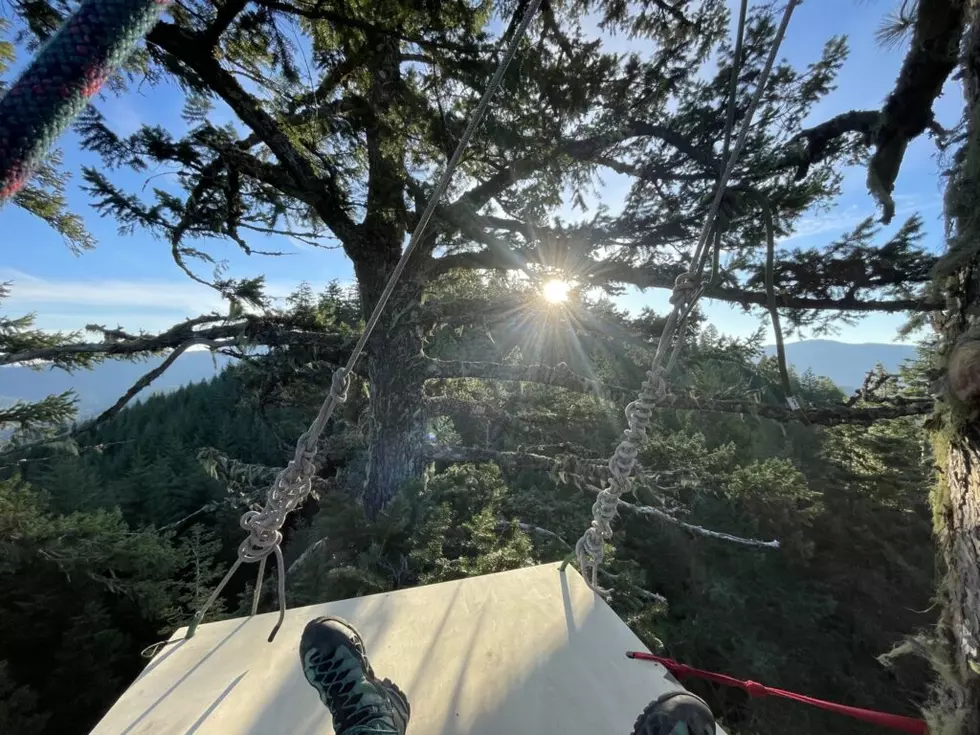
Groups file lawsuit to block old growth logging in Oregon
Alex Baumhardt
(Oregon Capital Chronicle) A coalition of environmental groups and regional activists are attempting to stop the U.S. Bureau of Land Management from allowing old growth trees to be logged in southern Oregon by waging a complaint in court and sitting in trees slated to be cut.
On Monday, activists from the environmental group Pacific Northwest Forest Defense climbed high into several Douglas fir trees in a 10,000-acre forested area near Grants Pass. The bureau calls it the “Poor Windy” project and has sold more than 2,200 acres in it to six companies to log. Activists say some of the trees due to be harvested are up to 400 years old.
The protest comes a week after Oregon Wild in Portland and Eugene, Ashland-based Klamath-Siskiyou Wildlands Center and Eugene-based Cascadia Wildlands filed a complaint in U.S. District Court in Medford against the federal bureau for allowing “heavy commercial logging” in another southern Oregon area, Rogue Gold, that has old growth trees and acreage designated as a Late Successional Reserve. The designation is meant to protect old growth trees from being logged and to allow mature trees to become old growth stands. The area is also home to threatened and endangered species, the complaint said.
Sarah Bennett, a spokesperson for the bureau in Oregon and Washington, said it is rare for officials to allow the sale of acreage with old growth trees and that environmental assessments have shown both contested harvest areas are low-risk for habitat destruction.
“We are committed to protecting trees above the age and diameter limits established,” she said in an email. “Generally, those that are greater than 36 inches in diameter and established prior to 1850.”
George Sexton, conservation director of Klamath-Siskiyou Wildlands Center, said the bureau is being dishonest.
“BLM is saying we don’t log old growth trees. Well, they (protestors) are sitting in old-growth trees that the BLM wants to log,” he said.
Sexton said allowing old growth trees to be cut is contrary to the Biden administration’s recent executive order to end old-growth logging on public lands by 2025.
“The BLM should be implementing Biden’s executive order to protect old growth forests, and if the BLM wants to log those trees, the very least they should do is stop lying about it.”
Most of the land designated as reserves
The federal land bureau’s forests in southwest Oregon are part of a 2.4 million-acre patchwork of federally owned forests across 18 Oregon counties that are governed by the Oregon and California Railroad Act of 1937. That act mandated that the bureau manage the lands for permanent timber production at sustainable levels.
Bennett said 80% of those acres are considered reserve acres, and 20% are open for logging sales. But Sexton said the “reserve” designation doesn’t necessarily prohibit logging.
“In the Medford district, they log the Late Successional Reserves just as heavily as they log in the harvest areas,” he said.
Today annual harvests from the Oregon and California Railroad lands are, on average, about 60% smaller than those in the 1930s, according to bureau data, and this year reduced the volume of timber for sale by 25% across its Oregon and California Railroad Act lands. Bennett said the agency has begun to prioritize protecting more old growth trees following the Biden order.
The U.S. Forest Service and Bureau of Land Management oversee about 278,000 square miles of forests across the country – an area about the size of Texas and Vermont combined. A recent inventory from the two agencies found that about 45% of those forests are considered “mature” and about 18% are considered “old growth.”
Most old growth and mature forests that are left in the U.S. are in Western states such as Idaho, California, Montana and Oregon.
